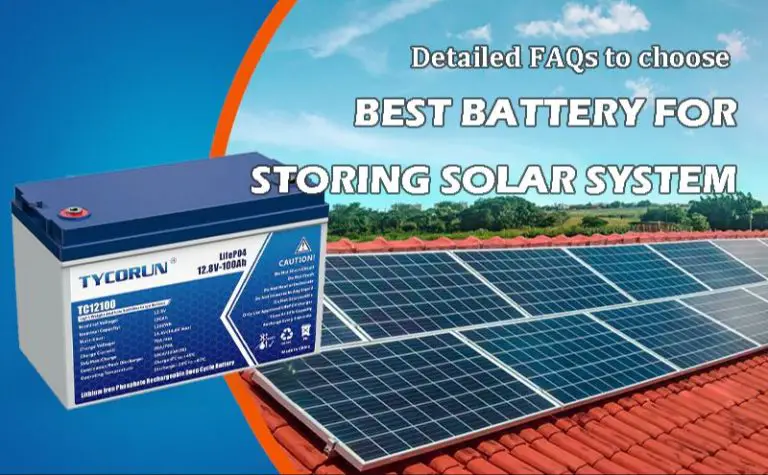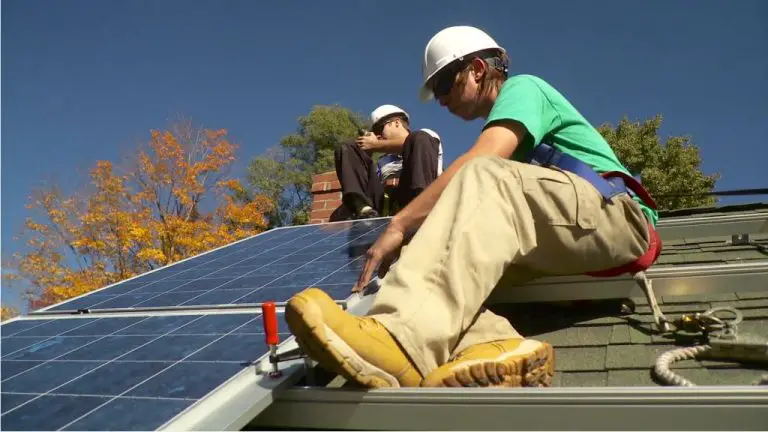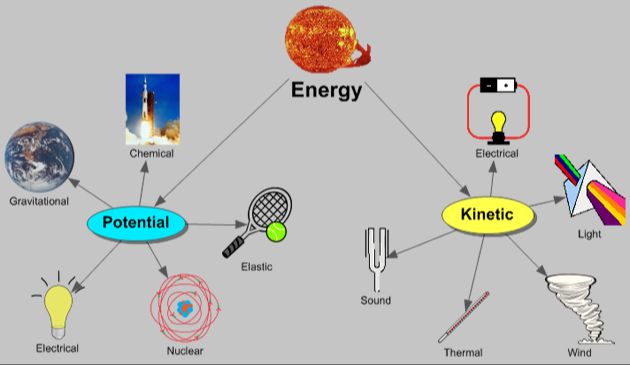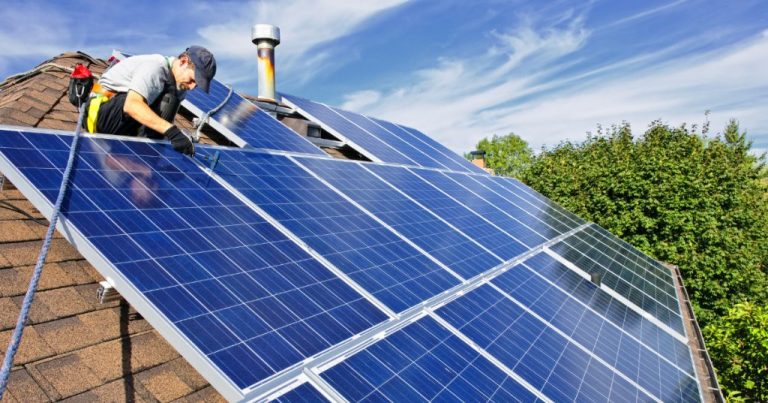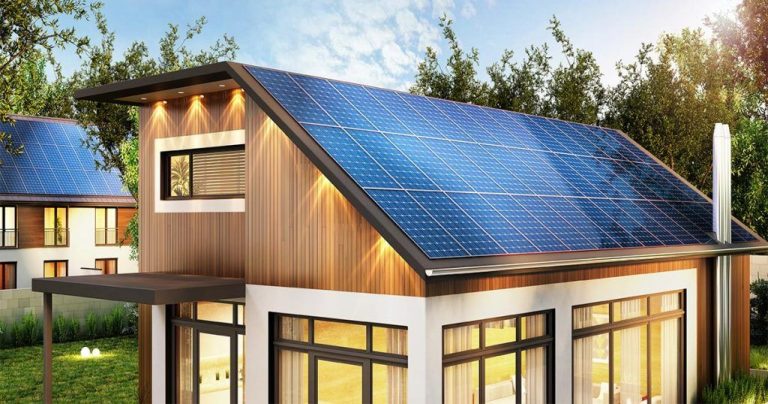What Is Passive And Active Solar Energy Apes?
Introduction
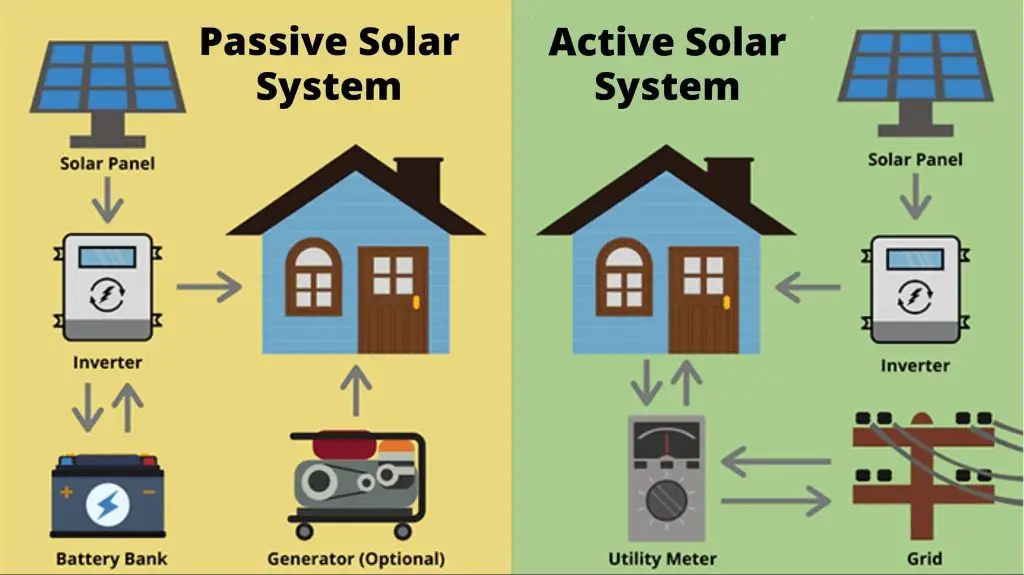
Passive and active solar energy are two different approaches to harnessing the sun’s energy for heating, cooling, and power generation.
Passive solar energy involves designing a building to capture and make the most of the natural lighting and heating that comes directly from the sun. Passive systems do not require any mechanical devices or input to work. Active solar energy systems use devices like solar panels or pumps to convert sunlight into usable energy like electricity or hot water.
Both passive and active solar energy systems offer renewable, clean ways to supplement or even fully meet a building’s power and climate control needs. This content will compare passive and active solar technology, provide examples, and explore the costs and benefits of each approach.
Passive Solar Heating
Passive solar heating utilizes design techniques to harness the sun’s energy for heating purposes. It works by maximizing heat gain during the winter and minimizing it in the summer. The main components of passive solar heating include building orientation, high thermal mass materials, and windows designed to trap sunlight (https://www.energysage.com/clean-heating-cooling/passive-solar-an-overview/).
For effective passive solar heating, a building should be oriented to face within 30 degrees of south. This allows it to absorb the maximum amount of sunlight in the winter. The south facing windows allow sunlight to enter and heat up the building’s thermal mass, such as concrete floors or masonry walls. These materials absorb the heat during the day and slowly release it at night, providing natural heating. Strategically sized windows and overhangs are used to block out summer sun while letting in winter sun (https://www.carboncollective.co/sustainable-investing/passive-solar-heating).
Properly designed passive solar heating drastically reduces the need for heating from fossil fuels or electricity. It provides free heating directly from the sun’s rays shining into the building. With good thermal mass materials, the heat can be stored and released over extended periods, providing natural heating day and night.
Passive Solar Cooling
Passive solar cooling utilizes design techniques that harness natural energy sources like shade, ventilation, and evaporation to cool buildings. Unlike active cooling systems that require electricity, passive techniques rely on strategic architectural design to naturally maintain comfortable indoor temperatures.[1] Some key passive cooling strategies include:
Shading: Properly sized overhangs, awnings, shutters, and shade trees block direct sunlight and reduce heat gain. Exterior shades are more effective than interior shades at preventing heat buildup. East and west facing windows need side fins or overhangs for afternoon shade. Movable shades offer flexibility.
Ventilation: Operable windows, ceiling fans, and clerestory windows facilitate cross ventilation and air flow. Stack ventilation pulls hot air up and out through properly placed vents. Night flushing purges built up heat at night when outdoor air is cooler.
Evaporative Cooling: As moisture evaporates from a surface, it draws heat and cools the air. Placing fountains, pools, or plants inside and using water features and misters outside takes advantage of this effect. High mass materials like stones cooled with water can also absorb heat.
Though passive solar design requires careful planning, these techniques can greatly reduce or eliminate the need for mechanical cooling in many climates.[2] Strategic placement of shading, ventilation, and evaporative cooling leverages natural energy flows to maintain comfortable temperatures.
[1] https://energy5.com/passive-solar-cooling-harnessing-nature-to-naturally-cool-your-space
[2] https://uplevelgreen.com/passive-solar-cooling-in-hot-humid-climates/
Active Solar Heating
Active solar heating systems utilize solar thermal collectors, heat exchangers, and pumps to convert sunlight into usable heat APES Ch. 16 Reading Guide — Energy Efficiency and Renewable Energy. The system uses solar collectors, usually mounted on the roof, which absorb heat from the sun. A heat-absorbing fluid like water or antifreeze is pumped through the collectors and absorbs the thermal energy. The heated fluid is then pumped through a heat exchanger, which transfers the heat to water used in the building’s hot water or heating system. The cooled fluid returns to the solar collectors to be reheated and continue the cycle Chapter 16 flashcards RG.
Active solar heating systems require pumps and controls to operate the collectors and circulate the heat transfer fluid. This makes them more complex than passive solar heating systems, but also allows them to provide heat even when the sun isn’t shining directly on the collectors. They can provide a substantial portion of a building’s space heating and hot water needs.APES: Renewable Energy Sources Flashcards
Active Solar Photovoltaics
Active solar photovoltaics convert sunlight directly into electricity using photovoltaic (PV) panels and inverters. PV panels, also known as modules, contain solar cells made of semiconducting materials like silicon that absorb sunlight and release electrons, generating direct current (DC) electricity. An inverter then converts the DC current into alternating current (AC) that is compatible with household appliances and the grid.
The key components in an active solar photovoltaic system include:
- PV panels – Absorb sunlight and convert it into DC electricity. Multiple panels are wired together to form an array.
- Inverter – Converts the DC electricity from the PV array into AC electricity.
- Racking – Securely mounts the PV panels.
- Wiring – Connects the components.
Active PV systems generate clean renewable energy from the sun. They can be installed on rooftops or ground-mounted and come in a variety of sizes from small residential to large utility-scale. PV panel prices have fallen dramatically, making solar power increasingly affordable.
Some key advantages of active photovoltaics:
- Generate electricity with no ongoing fuel costs.
- Modular and scalable.
- Long lifespan of 25+ years.
- Can provide electricity on-site for homes and businesses.
- Excess power can be exported to the grid.
Comparing Passive and Active Solar
Passive and active solar energy have some key differences in their approaches and applications. Here is an overview of the pros and cons of each:
Passive solar pros:
- Very cost effective – it utilizes free solar energy without the need for mechanical devices
- Low maintenance – passive systems require little upkeep once installed
- Versatile – can be incorporated into many building designs
Passive solar cons:
- Limited control – passive systems rely fully on environmental conditions
- Space requirements – properly implementing passive solar requires careful planning and design
- Climate dependence – works best in sunny climates with temperate winters
Active solar pros:
- Greater efficiency – active systems convert solar energy at higher rates than passive approaches
- More control – active systems allow directing and regulating energy use
- Works in any climate – active systems are less dependent on specific conditions
Active solar cons:
- Higher upfront costs – requires purchasing solar collectors and devices
- Maintenance – active systems require more upkeep and repairs
- Space requirements – solar arrays need adequate sunny space for installation
Example Passive Solar Buildings
Passive solar building design takes advantage of the sun’s energy for heating and lighting homes and other buildings. There are many well-known examples of effective passive solar buildings that demonstrate the benefits and beauty of this design approach.
The Kern Center at Hampshire College in Amherst, Massachusetts is considered one of the most famous passive solar buildings. Designed by architect Edward Mazria and opened in 1977, it uses passive solar principles to achieve 60-65% solar heating. The building’s south-facing windows, thermal mass wall, and overhangs work together to collect and distribute solar energy.
Another famous passive solar building is the Zion National Park Visitor Center in Springdale, Utah. Designed by architect Cecil Doty and opened in 1966, it was one of the first National Park Service buildings to utilize passive solar. The building is oriented and shaped to maximize solar gain.
These and other pioneering passive solar buildings demonstrated the viability of the design approach and inspired many subsequent projects. Their success continues to influence sustainable architecture today.
Example Active Solar Installations
Some of the largest active solar installations in the world include:
Bhadla Solar Park in India is currently the largest solar park in the world. With a capacity of 2,245 MW, it spans over 14,000 acres in Rajasthan. Phase I and II of the project were commissioned in 2018. The solar park utilizes both PV solar panels as well as solar thermal technology (Wikipedia).
The Mohammed bin Rashid Al Maktoum Solar Park in the United Arab Emirates is another massive project currently under construction. When finished, it will have a capacity of 5,000 MW. Phases I and II were finished in 2013 and 2017. Located near Dubai, it will help the UAE meet its renewable energy goals (The Eco Experts).
The Longyangxia Dam Solar Park in China is the largest solar park in the world based on capacity in active operation. With a total capacity of 850 MW, this massive project was built over 10 years and completed in 2019. The solar park feeds into the hydroelectric dam to provide renewable power to the grid (Ornate Solar).
Costs
The upfront and ongoing costs of passive and active solar energy systems can vary significantly.
For passive solar, the main upfront costs relate to properly designing and orienting the home to maximize solar gain. This may require upgraded windows, additional insulation, thermal mass materials, and exterior shading devices. Typical upfront costs for passive solar range from $5,000 to $20,000 depending on the extent of the design elements and size of the home. Ongoing costs are minimal since no mechanical equipment is required.
For active solar, the main upfront cost is purchasing and installing the solar panels and related equipment like inverters. According to Forbes, a typical 5kW solar panel system costs $16,000 to $36,000 upfront after incentives and tax credits. Ongoing costs include maintenance, repairs, and possibly battery replacement every 5-10 years. However, active solar can reduce or even eliminate ongoing electricity bills.
In general, passive solar has lower upfront and ongoing costs, while active solar has higher upfront costs but can save significantly on electricity costs long-term. The optimal solar energy solution depends on each home’s unique needs and budget.
Conclusion
In summary, there are distinct differences and purposes between passive and active solar energy technologies.
Passive solar heating involves capturing sunlight and warmth from the sun through large window areas. This method is suited for spaces like homes and greenhouses that require broad surface areas of sunlight exposure for direct heating. Passive solar cooling involves reflective surfaces and good ventilation to reflect sunlight and circulate cooler air. This is ideal for naturally cooling homes, offices, and other buildings.
Active solar energy has a broader range of applications. Active solar heating systems like solar thermal collectors can capture sunlight for heating water or spaces on a smaller directed area or surface. Active solar photovoltaics like solar panels can directly convert sunlight into electricity. This allows solar panels to be integrated into many applications for remote power generation, on rooftops, vehicles, and more.
In terms of costs, passive solar applications tend to have lower upfront costs, as they rely on building orientations and materials for heating and cooling effects. Active solar systems require installation of equipment like solar panels or thermal collectors, leading to higher initial costs. However passive solar can have limitations based on climate and building site, while active solar offers more flexibility.
Overall, both passive and active solar technologies will continue to have an important role in sustainability, energy efficiency, and renewable energy generation in the future.

